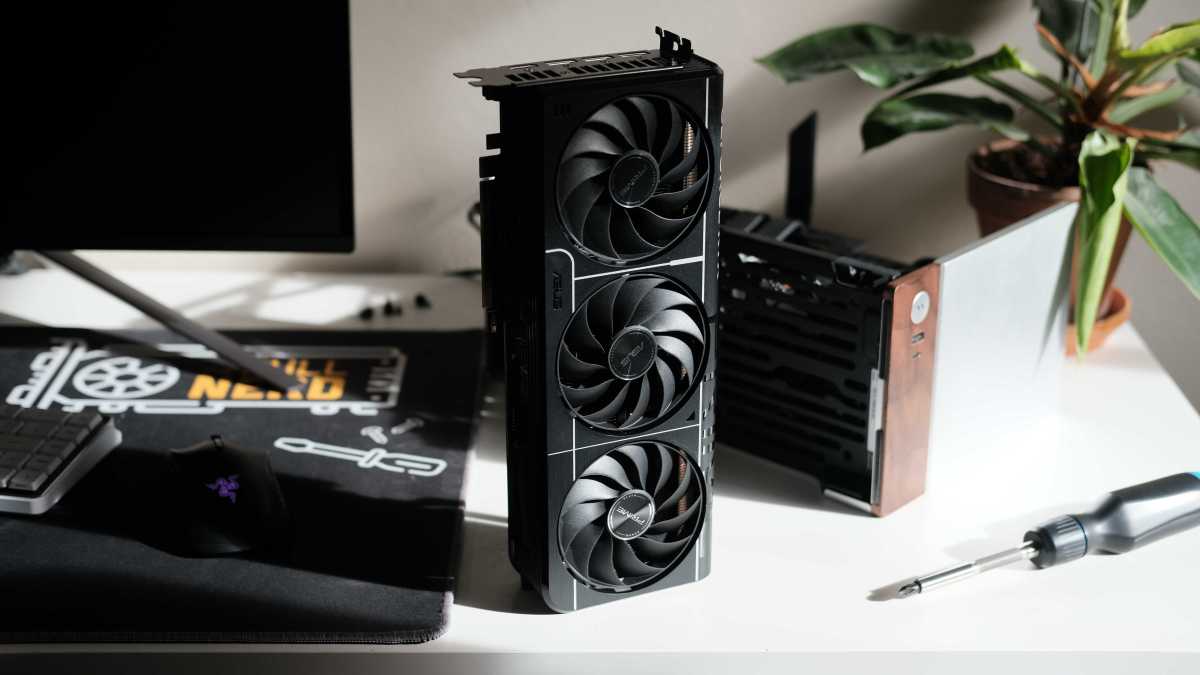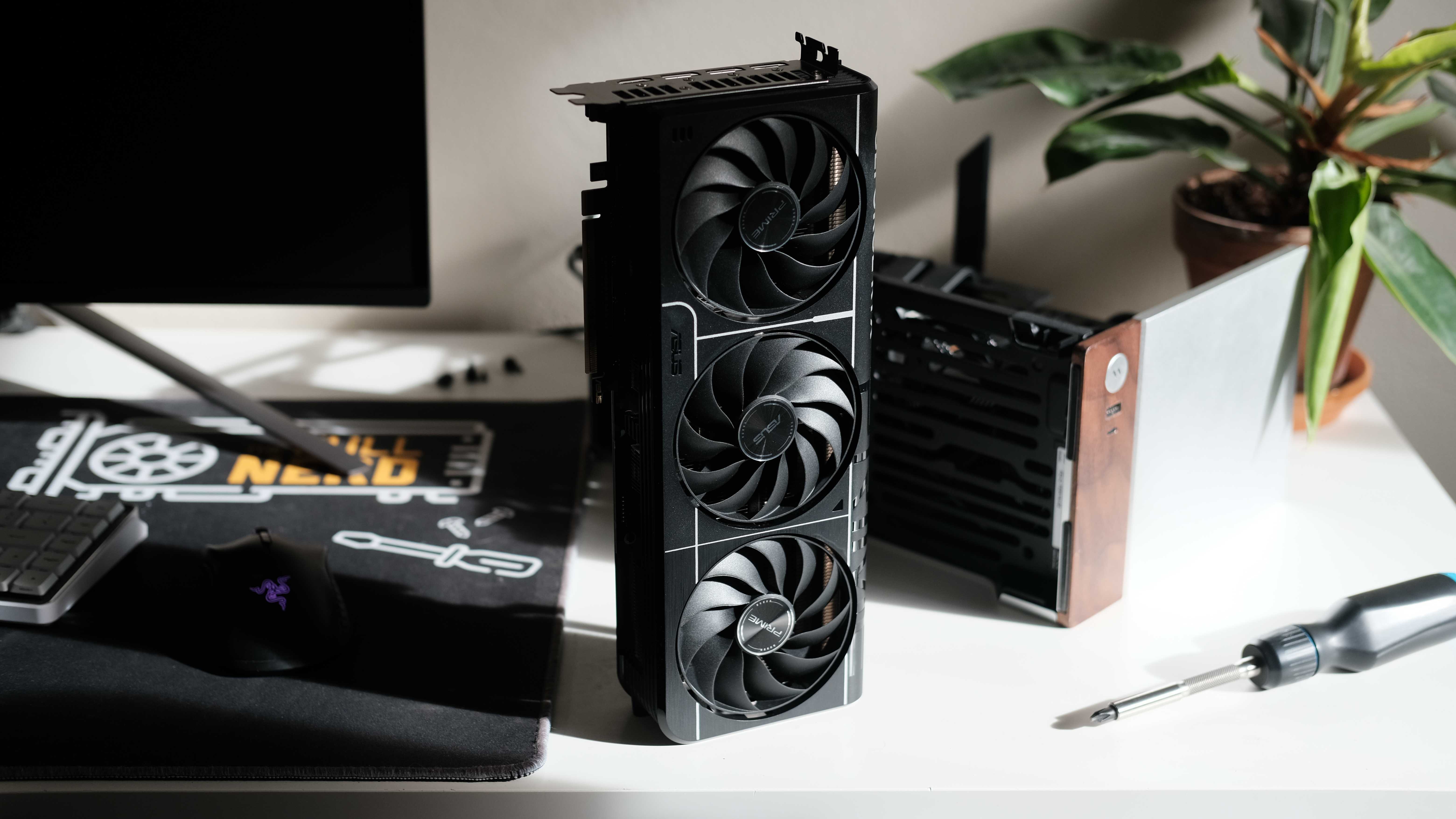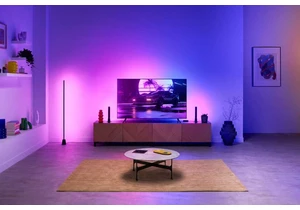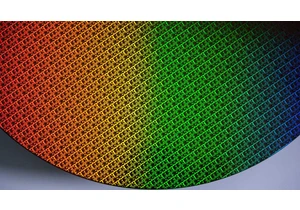Sifting through the multitude of gaming hardware stories and there’s only been a handful about PC VR written for the start of this year.
That’s a shame because new technologies will likely propel VR forward in 2025 — at least a little closer to that seamless high-resolution experience that all VR gamers want. I’m mainly referring to Nvidia’s RTX 50-series and AMDs Radeon RX 9000-series graphics cards and what they mean for VR gaming performance.
I’ll get to that in a minute, but first a quick snapshot of PC VR performance in 2024.
VR and the best graphics cards of 2024
In 2024 we saw some gamers adopt Nvidia’s RTX 40-series and AMD’s 7000-series graphics cards in PC VR gaming. Those that did largely saw an uptick in frame rates from what they had before.
YouTubers posted impressive fps in games like Cyberpunk 2077 and
Despite 2024’s top-tier cards showing big performance differences over the previous year’s graphics cards they couldn’t quite hit the kind of frame rates we saw in flat screen gaming. Mid-range cards like the RTX 4070 reported playable experiences in triple-A PC VR games too, some averaging around the 70- to 78fps mark, but performance rarely averaged upwards of 100fps.
In a nutshell, VR remained a tough gig for even the best video cards in 2024, which isn’t really that surprising. VR does have heftier requirements than flat screen gaming, because of its stereo rendering and wide field of view, especially at higher resolutions, like 3K.
What to expect in 2025
It’s early days for performance results but there’s no doubt VR gaming will be nudged further along by Nvidia and AMD’s new offerings this year. I don’t see them bringing VR into the mainstream, but they will undoubtedly make for smoother, more seamless experiences. I for one am looking forward to dusting off my VR headset considering the extra power on offer.
Some of the first VR benchmark results for the RTX 5090 versus the RTX 4090, for instance, are very enticing. One using the Meta Quest 3 demonstrates a 236 percent performance jump in Metro Awakening, a 151 percent increase in Red Matter 2, and a 47 percent increase in Skyrim VR for the RTX 5090 over the RTX 4090, for example.
The small print here is that at its current $2,000 price tag and 1,000W PSU recommendation, the Nvidia RTX 5090 is placed in a price and power category that may make many gamers wince. Consequently, it’s possible a lot of buyers will choose one of the step-down RTX 50 cards when they upgrade — me included.
You can expect more modest performance from the Nvidia RTX 5080, RTX 5070 Ti, and RTX 5070 GPUs in PC VR, but it’s still likely to be quite good, and better value.
I especially like the sound of the RTX 5070 Ti; its performance is only slightly shy of the RTX 4090 and at $749 (instead of the RTX 4090’s $1,599) at launch, it’s a lot cheaper too, so getting rid of the jitters in some triple-A VR titles will at least be more affordable than last year.

Nvidia’s RTX 5070 Ti is well priced and powerful. It’s a good choice for VR PC enthusiasts.
Adam Patrick Murray / Foundry
AMD’s top card is similarly placed for a respectable performance gain in PC VR games. To use the AMD RX 9070 XT as an example, you’re looking at approximately 42 percent better performance than the previous generation RX 7900, which should go a long way to making VR gameplay smoother and more enjoyable if you opt for one.
mentioned in this article
GeForce RTX 5070 Ti

PC VR gamers will once again see more realistic rendering of lighting and shadows in VR titles, too, thanks to further advancements in these card’s ray tracing capabilities. The 4th-generation ray tracing cores in Nvidia’s RTX 50-series cards, for example, are expected to boost RT performance by between 15 to 30 percent.
Quicker load times and higher resolutions
VR players using the latest-generation RTX 50-series cards can expect quicker load times at higher resolutions than was previously possible. That’s thanks to the RTX 50 cards sporting GDDR7 VRAM which has 33 percent quicker bandwidth than GDDR6X VRAM in previous generation Nvidia GPUs.
It will load in and out of memory at speeds up to 32Gbps (gigabits per second), compared to 24Gbps for GDDR6X, which will be especially useful for 4K per-eye VR gaming which is very graphically demanding.
AMD’s Radeon RX 9000-series graphics cards feature16GB of GDDR6X VRAM. That’s still good — we can expect it to be quick, even if it’s not quite as fast as Nvidia’s latest cards.
Two other new features of the Nvidia RTX 50-series GPUs look exciting for players who want to future-proof their upgraded hardware for PC VR. One is DisplayPort 1.2a, which will support 4K per-eye headsets at 120Hz or higher.
The other is 4:2:2 pro-grade color encoding support for multi-view (MV-HEVC). When VR supports this kind of encoding, players will be able to experience games in more vibrant color than the 4:2:0 compression that’s currently used in VR.
Nvidia DLSS 4 and AMD Fidelity FX Super Resolution 4 in VR
You could say these two technologies have already had an impact in some VR games judging from ">gamer reactions in 2024. On the other hand, there are still only a handful of VR games that support these technologies and that’s not likely to change much in 2025. Some notable titles include games like Skyrim VR, Microsoft Flight Simulator, No Man’s Sky, and VR Kayak Mirage.

Nvidia’s DLSS 4 technology is only supported in a handful of PC VR games so far.
Nvidia
It’s worth noting, though, that even the VR games that support them won’t utilize all the features in these technologies. DLSS 4’s Multi-Frame Generation, for example, is one feature that remains unsupported by VR PC games. In fact, it causes increased latency compared to VR frame extrapolation technologies.
What else does 2025 have in store for PC VR gaming?
Gamers are going to want one of the video cards I just mentioned to get the best performance out of a spate of new lightweight 3K and 4K per-eye VR headsets arriving this year. They include the 4K Pimax Dream Air and Shiftall’s MeganeX superlight 8K.
From a games perspective, 2025 should bring an interesting and varied lineup of releases, from throwaway casual titles to big name blockbusters.
Just a few that I’m personally looking forward to include the time travel / escape room adventure Wanderer the Fragments of Fate, the puzzle game Infinite Inside: The Lost Depths, and a demolition derby game with destructible environments called FlatOut VR. Here’s hoping they play as well as they sound.
Further reading: Why I’m still using my Vive Pro for VR, six years later
Connectez-vous pour ajouter un commentaire
Autres messages de ce groupe

For a decade or so, a major threat to your laptop wasn’t a virus, mal

Far be it from me to engage in a little schadenfreude… Actually, no.

During the first quarter of 2025, the total number of DDoS attacks in

One of the best ways to sync your smart lights with the images on you


Roku is best known for its streaming boxes and sticks, but it also of

Intel said Tuesday that the company’s Arizona fab has run the first l

